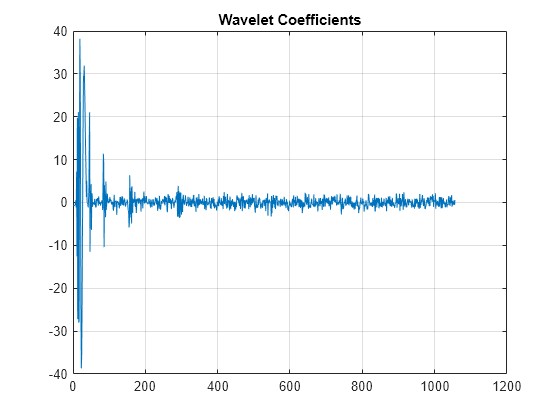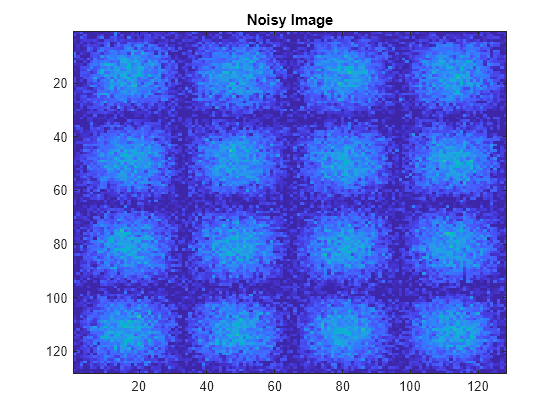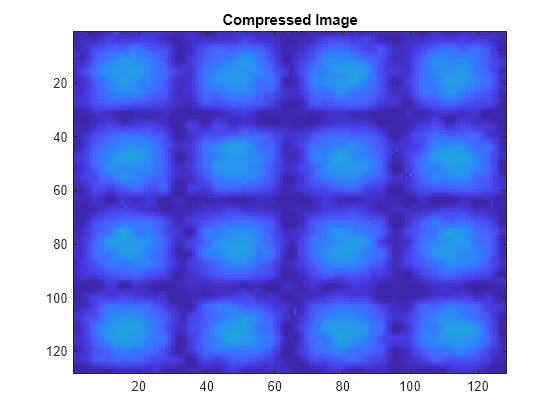wthrmngr
Threshold settings manager
Syntax
Description
wthrmngr returns a global threshold or
level-dependent thresholds for wavelet-based denoising and compression. The
function derives thresholds from the wavelet coefficients in a wavelet
decomposition.
thr = wthrmngr(opt,method,C,L,alpha)[
wavelet decomposition threshold using the sparsity parameter
C,L]alpha. For signals,
[
is the output of C,L]wavedec. For
images,
[
is the output of C,L]wavedec2.
To learn more about alpha, see wdcbm or
wdcbm2 for
compression, and wbmpen for
denoising.
thr = wthrmngr(opt,method,C,L,scale)[
wavelet decomposition threshold using the type of multiplicative
threshold rescaling specified in C,L]scale. For
signals,
[
is the output of C,L]wavedec. For
images,
[
is the output of C,L]wavedec2.
The 'rigrsure', 'heursure', and
'minimaxi' denoising methods are only
applicable to signals.
To learn more about multiplicative threshold rescaling, see wden.
thr = wthrmngr(opt,method,swtdec,alpha)swtdec, of the signal or image to
denoise. alpha specifies the sparsity parameter
(see wbmpen). For
signals, swtdec is the output of swt. For images,
swtdec is the output of swt2.
Thresholds are derived from a subset of the coefficients in the stationary wavelet decomposition. For more information, see Coefficient Selection.
thr = wthrmngr(opt,method,swtdec,scale)scale. For signals,
swtdec is the output of swt. For images,
swtdec is the output of swt2.
Thresholds are derived from a subset of the coefficients in the stationary wavelet decomposition. For more information, see Coefficient Selection.
The 'rigrsure', 'heursure', and
'minimaxi' denoising methods apply only to
signals.
To learn more about multiplicative threshold rescaling, see wden.
thr = wthrmngr(opt,'rem_n0',X)X, using the specified wavelet option and
method 'rem_n0'.
If opt is 'dw1dcompGBL' or
'dw2dcompGBL', thresholds are based on the
finest-scale wavelet coefficients obtained using the Haar wavelet. If
opt is 'wp1dcompGBL' or
'wp2dcompGBL', thresholds are based on the
finest-scale wavelet packet coefficients obtained using the Haar
wavelet.
Examples
Input Arguments
Output Arguments
Tips
To denoise 1-D signals, consider using the Wavelet Signal Denoiser. The app visualizes and denoises real-valued 1-D signals using default parameters. You can also compare results. In addition, you can also recreate the denoised signal in your workspace by generating a MATLAB® script, which uses the
wdenoisefunction.
Algorithms
References
[1] Birgé, L., and P. Massart. “From Model Selection to Adaptive Estimation.” Festschrift for Lucien Le Cam: Research Papers in Probability and Statistics (E. Torgersen, D. Pollard, and G. Yang, eds.). New York: Springer-Verlag, 1997, pp. 55–88.
Version History
Introduced before R2006a










